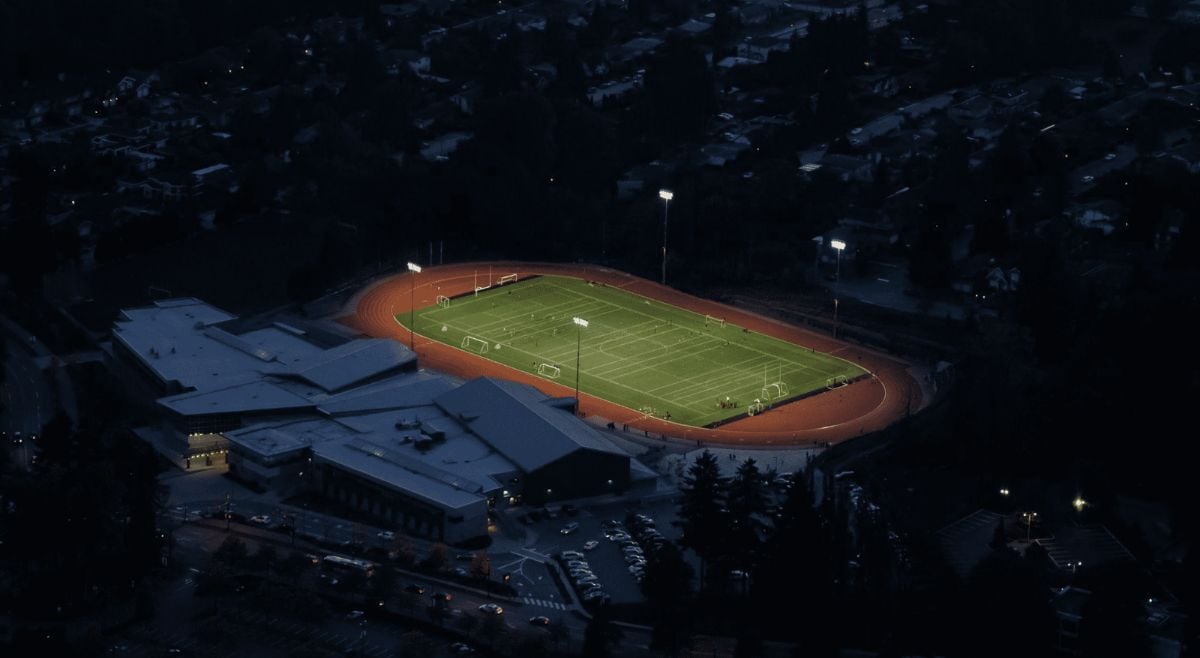Lighting is one of the most important elements that need consideration in places where sports events are held. Lighting for sports facilities will play, thus, a double role: first, providing optimal visibility to sportspeople and referees, and then, making sure that the audience can watch the event as well as possible.
Regulation on lighting for sports facilities
One thing to be emphasized about lighting for sports shows is that it normally complies with specific regulations and meets different requirements depending on the type of sport that is being practised. Such requirements can also differ according to the geographic area – specific regulation by country or region, specific regulation on the protection of the night sky, etc.
For instance, planning lighting conceived for tennis events has nothing to do with the one for basketball events. Even if both seek to offer high-quality, glare-free lighting, each will require floodlights featuring different optics to ensure uniformity, and must be installed in areas that had been previously examined. It is also important for them to offer a good color rendering index.
Likewise, features of the area must be also considered. In this respect, there are also different regulations concerning the area where the sports event will be held. The recommendations about how the different parts of the facility must be illuminated are covered by the Spanish regulation on sports and leisure facilities (NIDE). For example, it is established that artificial lighting needs to reach different levels depending on whether they are class I, II or III, or if they are intended for events that may be broadcast.

Main features about lighting to be considered
As we have already mentioned, lighting for sports facilities is not always applied in the same way, as it will depend on both its function and the facilities to be illuminated.
When determining the optimal light conditions, the ground will have a main role. Note that light will be reflected differently on a clay court and on a grass field. That’s why the ground should be well studied before choosing one type of lighting or another.
Apart from that, lighting will differ considerably from outdoor to indoor sports facilities, and also whether matches in this facility will be broadcast or not. All these factors together will influence on the angles – rotation and inclination – where the floodlights will be installed, and also on their pointing or light intensity.
Trying to achieve the greatest degree of energy efficiency is the most common piece of advice these days, regardless of the sports event or the facility itself. Without compromising, by all means, any requirement established by each sport federation.
Main lighting recommendations for sports facilities
Apart from energy savings, there is more general advice to get the best possible lighting for sports facilities. Among them, we can find two aspects that are common to any sports activity:
Know the game field
Knowing where and how the floodlights will be installed is, without a doubt, one of the most important aspects when designing the lighting for any sports event. It is vital that lighting is uniform across the whole field and that it does not favor any specific player, no matter where they are on the field. Sometimes, it will be necessary, though, to highlight a part of the field in particular or their accesses. Installing some extra floodlights will be another aspect worth considering.
Yet another key aspect is dimensioning the structures supporting the floodlights. Not only is it necessary to know the exact height at which they will be installed or the distance between the different points, but also how the elements will be attached. More specifically, it is advisable to know whether we are dealing with columns/ _ or not; the types of cross heads or surfaces; if the luminaires will be anchored to the ceiling or beams; the distance between the floodlight supports and the different structures. Concerning the latter, it is also vital to be well aware of the real weight of the luminaire to be installed as a whole. As for outdoor lighting, bear in mind the surface exposed to wind, and their wind and vibration resistance.
Last but not least, it is worth taking into account whether there will be any kind of regulation or monitoring; if it will be wireless or wired and, if the latter was the case, how the connection will be structured for the wire dimensioning.
LED lighting is one of the best choices
Apart from consuming less energy and providing good lighting quality, LED technology brings you another interesting advantage for sports events: this kind of lighting is much more directive, so it is much more convenient for both the players and the audience.
Custom sports lighting
If you are seeking for the best results, the conditions of the sports center should be ideally analyzed while considering all its features so as to implement tailored lighting solutions. For this, it is strongly recommended that you turn to companies with the know-how in this kind of facilities to obtain the best results.
At Televes Corporation, we design our own ranges of sports luminaires from ground up to make sure that lighting is specifically adapted to every feature of the sports center where it will be implemented. Likewise, our solutions adapt to both the specific regulations in force of each federation and to those preferred by the sports center.
Our goal is for our lighting to help create major sports areas that attract sportspeople and audiences, while they enjoy any kind of sports event. By doing so, we can guarantee the best return of investment for the center.
Similarly, our commitment is to offer efficient energy solutions with the lowest environment impact and also to achieve considerable energy savings.


LEAVE THE COMMENT